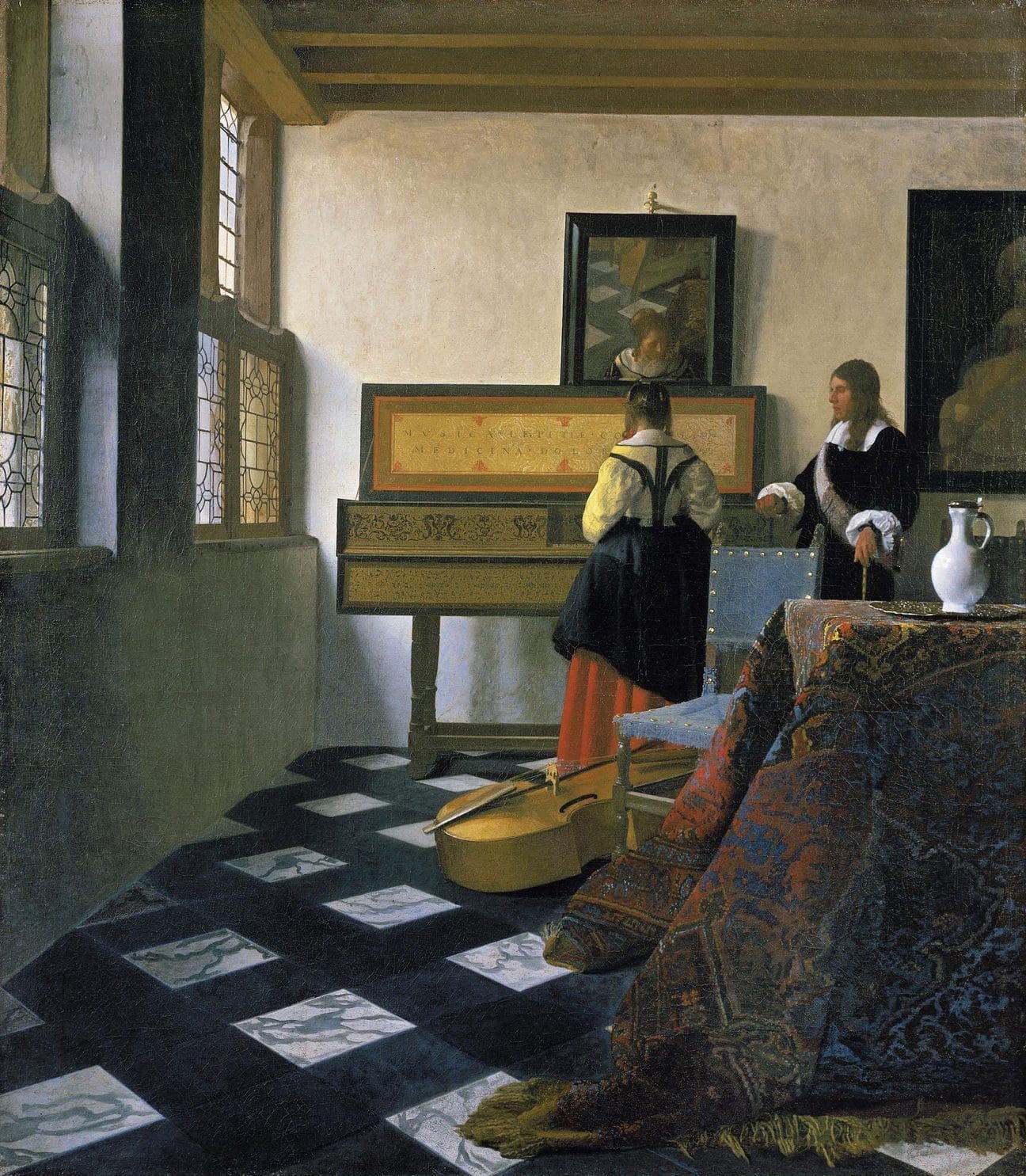A great photo takes a fair amount of technique, a keen eye, and some instinct. You may have taken several in your lifetime that you can be proud of, and admired the detail and lighting within that framed moment. But would you be able to reproduce that same photo in a painting and have it still feel as if you were peering through a window. Tim Jenison set out to do just that; only his project was much more ambitious.
In the documentary Tim’s Vermeer, directed by Teller (of Penn and Teller fame) and narrated by Penn Jillette, Tim Jenison is an inventor and graphics designer who used his talents to found a company called NewTek Inc., located in San Antonio. They provided the tools needed for developing a TV show in your home using your personal computer. In his spare time he took it upon himself to figure out how machines work and dismantled them so he could put them back together. This led him to not only admire, but obsess over the works of Dutch painter Johannes Vermeer. One of Vermeer’s more recognizable paintings is the Girl with the Pearl Earring. The amount of detail, from the fabric, to the furniture, and especially the lighting, fascinated him to no end. So he decided to see how it was done and if he himself could produce one of equal quality. The painting he wanted to recreate is called The Music Lesson.

There is very little known about Vermeer’s process, techniques were always a trade secret, so historians had to rely on theory to help further the discussion of his craft. One such theory Tim used, provided by the book Secret Knowledge by David Hockney, involved lenses and mirrors and what’s known as a camera obscura. Tim invented another contraption himself he believes Vermeer may have used to capture the light and delicate nuances of his work. With the help of several experts, and even a visit to the original painting at Buckingham Palace, Tim created, from scratch, an exact replica of the room from the Music Lesson. Once completed he hoped to reproduce the painting in the same way using similar tools and ingredients Vermeer would have had access to.
It is worth noting that Tim is not a painter, or carpenter, or any of the other skills needed for such a complicated project, but his genius knows no limitations, and he tackled each one with a clever curiosity. The real test was once he viewed the uncanny, recreated room in his mirror, complete with models standing in for the music student and her teacher, and finally puts brush to canvas.
Tim’s painting skills grew with each passing day; days that stretched into months and even years. We are given a condensed amount of the time spent on this painting, but we are still left with awe at the concentration and patience required to finish this passionate work. Even Tim admits his continued dedication to the project would not have existed if the documentary wasn’t by his side. I doubt, though, he could walk away from what may turn out to be one of his greatest achievements.
Whether Vermeer used these techniques himself is a matter of debate, and some purists scoff at the idea of using mirrors or any such devices to paint with, but the results speak for themselves. I believe art is a free-flowing form of expression and there is no one way to demonstrate that expression. The biggest obstacle Tim had with his demonstration was the light. Vermeer’s paintings are like photographs and the lighting in them is incomparable to any other artists of his day. It is difficult to imagine someone producing that kind of light without some assistance.
Tim’s Vermeer challenges the world of technology and art and proposes that they aren’t so different. They can be part of the same cloth. I recommend this movie highly for the love of art, the dedication of any craft, and the beautiful score that compliments Tim throughout his journey. The human eye has its limitations, it can only see so much and what this film does amazingly is focus our eyes on something so beautiful by first getting us to admire the light. Hundreds of years later and that light still astonishes us because Vermeer knew how to capture it. Let’s see if Tim can do the same.
10 out of 11
[SlideDeck2 id=9269]





























